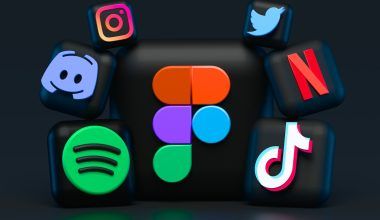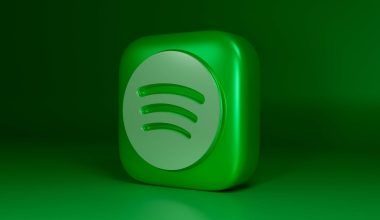For musicians, the dream of earning a living from their art is more achievable than ever. Platforms like Spotify, Apple Music, Amazon Music, and others have leveled the playing field. But just uploading your tracks isn’t enough. To monetize your music on all digital stores easily, you need to understand the process, strategies, and tools that work in your favor.
This guide will help you navigate every aspect of the journey, from uploading your music to marketing it effectively. Whether you’re an indie artist or part of a band, there’s a clear path to earning revenue from your songs.
What Does Monetizing Music Mean?
Before jumping into the how, let’s talk about what it means to monetize your music. In simple terms, monetization involves earning money from the distribution, streaming, or sale of your music. Digital stores pay you royalties based on streams, downloads, and purchases. But there’s more to it than just putting your music online.
You need to choose the right distribution platform, optimize your tracks for discoverability, and market them to reach the right audience. When done right, monetization becomes a recurring source of income that grows with your fanbase.
Step 1: Preparing Your Music for Monetization
Record and Produce Quality Tracks
Your music is your product, and it has to meet industry standards. Invest in good recording equipment or collaborate with a professional studio. High-quality tracks are more likely to attract listeners and get featured on playlists.
Register Your Work
To protect your rights and ensure you get paid, register your songs with a performing rights organization (PRO) like ASCAP, BMI, or PRS. This step also helps you earn royalties from public performances and broadcasts.
Get an ISRC Code
An International Standard Recording Code (ISRC) is essential for tracking your song’s performance across platforms. Most distribution services offer ISRC codes as part of their package.
Step 2: Choosing the Right Distribution Platform
Digital distribution platforms are your gateway to streaming services and online stores. Platforms like TuneCore, DistroKid, and CD Baby help you upload your music to major stores like Spotify, Apple Music, and Amazon Music.
Popular Distribution Platforms
- TuneCore: Great for beginners with a flat annual fee.
- DistroKid: Ideal for unlimited uploads at an affordable price.
- CD Baby: Offers additional services like physical distribution and sync licensing.
Step 3: Uploading Your Music
Uploading your tracks isn’t as simple as dragging and dropping files. Here’s how to do it right:
Metadata Matters
Fill in all the metadata fields accurately. This includes song titles, artist name, genre, and release date. Metadata ensures that your music appears in search results and recommendations.
Optimize Your Cover Art
Your album art is the first thing listeners see. Make sure it’s visually appealing, high-resolution, and meets the platform’s guidelines.
Set the Right Price
While streaming dominates the industry, some listeners still buy music. Set a competitive price for downloads to maximize revenue.
Step 4: Promoting Your Music
Monetizing your music on all digital stores easily also depends on how well you market it. Here are some proven strategies:
Social media platforms like Instagram, TikTok, and Twitter are perfect for connecting with fans. Share snippets of your songs, behind-the-scenes content, and updates to keep your audience engaged.
Collaborate with Influencers
Influencers can introduce your music to a larger audience. Partner with creators in your niche to feature your songs in their content.
Create Playlists
Playlists are a powerful tool for increasing streams. Curate playlists with your songs and similar tracks to attract listeners.
Pitch to Editorial Playlists
Most streaming services have editorial playlists curated by experts. Use their submission tools to pitch your tracks for inclusion.
Step 5: Tracking and Maximizing Revenue
Monitor Your Streams
Use the analytics tools provided by your distributor or streaming platforms. These tools show how your music is performing, where your listeners are located, and what they prefer.
Explore Multiple Revenue Streams
Apart from streaming, consider licensing your music for movies, ads, or video games. Merchandising and live performances can also boost your income.
Keep Releasing New Music
Consistency is key. Regular releases keep your audience engaged and help you stay relevant in a competitive market.
Challenges You Might Face
Even with the right approach, monetizing your music can come with challenges. These include:
- Low initial streams.
- Difficulty standing out in a crowded market.
- Understanding royalty structures.
But don’t let these discourage you. With persistence and smart strategies, you can overcome these hurdles.
Conclusion: Start Earning from Your Music Today
Monetizing your music on all digital stores easily is not just a possibility; it’s a reality waiting for you to embrace. By following the steps outlined here, you can transform your passion into profit.
From preparing high-quality tracks to choosing the right distribution platform and promoting your music effectively, every step matters. Remember, the key is to stay consistent, understand your audience, and adapt to industry trends.
So, why wait? Start your journey today and make your music work for you.
For further reading, explore these related articles:
- How to Get a Radio Station
- How to Start a Jam on Apple Music: A Complete Guide
- SpotifyMusic: Your Gateway to Musical Bliss
For additional resources on music marketing and distribution, visit DMT Records Private Limited.






